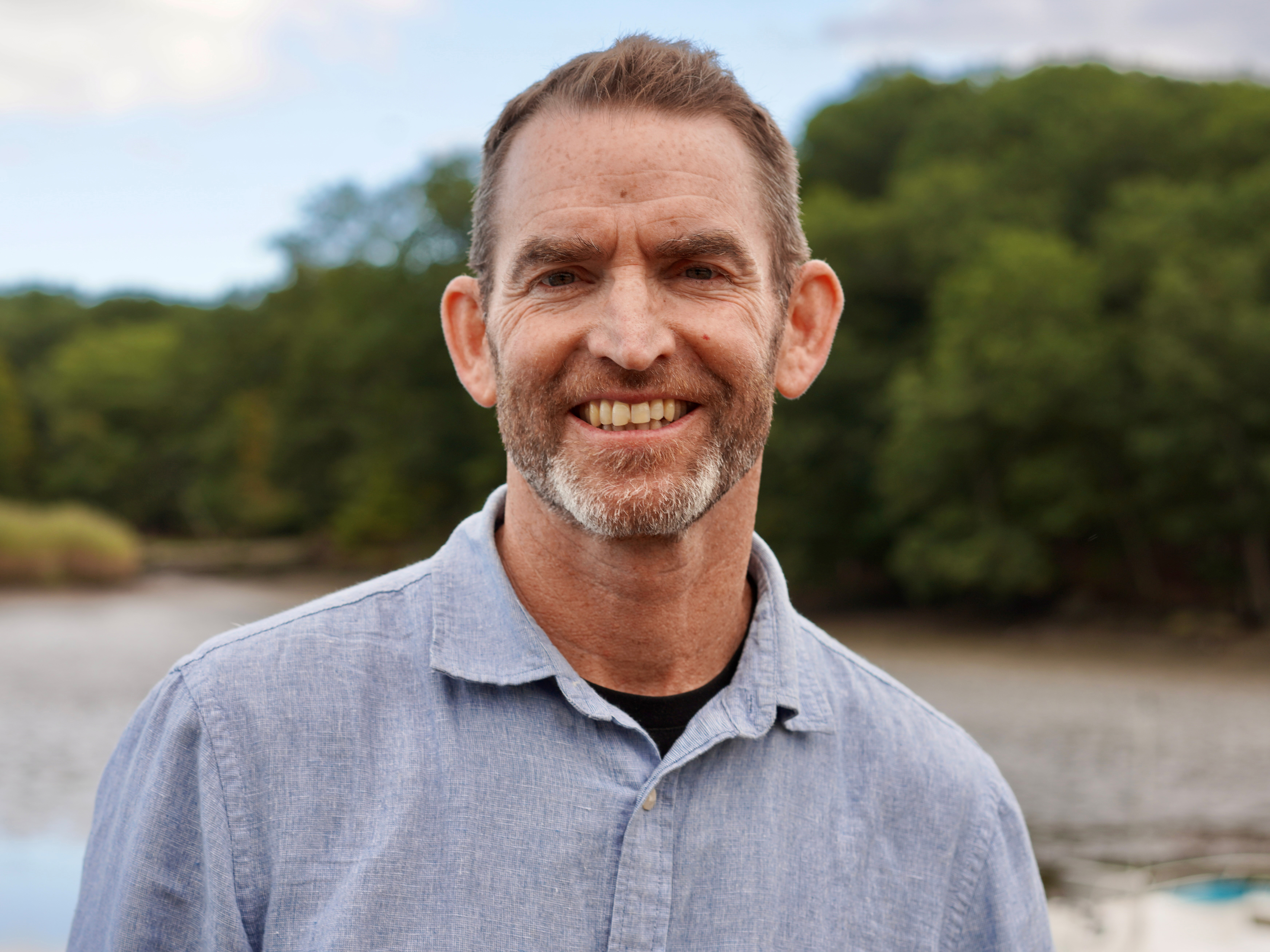Marine ecologist
Kalle Masto

‘We have the technologies and policies to make the necessary economic investments that can lead to a healthier watershed,’ says Kalle Masto, director of PREP. ‘But the stressors of human development and global climate change are increasing.’ (Photo by Todd Selig) In the recent report by the Piscataqua Region Estuaries Partnership on the health of the greater Piscataqua Region Watershed, one of the recommendations includes a reassessment of policy priorities. “The science shows that focusing issue by issue, species by species (is) counterproductive and not cost-effective. Let’s focus on solutions that help many issues, many species,” the report said.
Simply put, an estuary is a partially closed coastal water body where freshwater from rivers and streams mixes with ocean salt water. The Piscataqua Region Watershed is far greater than the immediate Seacoast region. It includes dozens of communities and 1,086 square miles of land and water in Maine, Massachusetts and New Hampshire, some miles away from the coast. It touches on the integrated ecological and environmental natures of rivers and streams that drain into Great Bay and the Hampton-Seabrook estuaries.
Kalle Masto, a marine ecologist and the director of PREP (which was founded in 1995), is a native of Southern California who has been at the University of New Hampshire since 1997 when he started his master’s degree in eelgrass ecology in the Great Bay Estuary. (UNH hosts and administratively runs PREP, which is funded by the U.S. Environmental Protection Agency.) Masto said that he was a “Cousteau kid” whose love of the ocean was ignited by the televised adventures of French underwater explorer Jacques Cousteau.
Beyond his love of research and being underwater, Masto works to effectively and timely link science to local and regional decision-making. He spoke with me about the most recent report, how if differs from the first one, the importance of local involvement in the more than 80 action plans, and concern about the future from excessive development and climate change — impacts of which are already being felt from the health of estuary waters and grass to migratory fish.
Q. What is the most significant difference between the 1st PREP report in 2000 and the most recent one in 2023?
A. In 2000, PREP was actually called NHEP (New Hampshire Estuaries Project). In 2010, the program became a bi-state organization, renamed to the Piscataqua Region Estuaries Partnership. The 2000 report really had to set out the basics of what an estuary was and all the different things that impact an estuary, from population increase to dredging to recreational fishing. However, many of the most critical data that we require to take the vital signs of our ecosystems didn’t exist yet. Yes, we tracked eelgrass and oysters, but we didn’t track phytoplankton, total suspended solids, seaweed and nitrogen loading — four absolutely critical aspects of our system. Finally, I would say that this latest report is many times more collaborative, whereas the 2000 report was produced in a more centralized way.
Q. What concerns you most about the findings in the 2023 report?
A. My big take is this: The (Piscataqua) Watershed is a patient in the doctor’s office. The watershed is struggling and is very sick but not outwardly so. We have the technologies and policies to make the necessary economic investments that can lead to a healthier watershed. But the stressors of human development and global climate change are increasing. Our municipal wastewater treatments are doing a valiant job but the heavier storms and more frequent droughts are making it more difficult on estuary ecosystems. Waters are warming, which is creating impervious covers of vegetation impacting everything in the watershed.
Q. What might be people be surprised about the work and collaborative efforts of PREP?
A. First, as I mentioned earlier, the report was co-written by 40 scientists and reviewed by more than 100 people in the partnership. We also have more educators and students in high-ed and community college who are part of what we do.
Second, there are only 28 estuaries in the country, and it’s vitally important to protect them. We were very focused on saltwater in the 1990s, and we learned that we can’t protect the estuary if we don’t protect the entire watershed. Everything is connected. For example, on the surface, Milton has little in common with Portsmouth. But the fact of the matter is that the things communities like Milton do to protect lakes and streams helps us protect the watershed and the estuary where migratory fish and plants are part of a complex food chain.
Q. What can the public do?
A. We work in a democracy, and the democratic system requires we make our voices heard. Everybody can do something. Our collective voice can help close the gap that exists between science and decisions. Science can’t make decisions for us, but it can tell us potential risks and consequences. From a business standpoint, does it make long-term business sense to have an unhealthy watershed? There are all sorts of agendas out there, but we can make the right investments if we want. We believe we can grow and protect the environment and have a healthier watershed. Somehow, ecosystems are more subject to science than the human body. We need to continue flipping the precautionary principle and not allow a lack of data as a reason not to do everything we can do protect the environment. We don’t treat the watershed the same way we treat a loved one’s health. Why is that?
Find out more at prepestuaries.org.